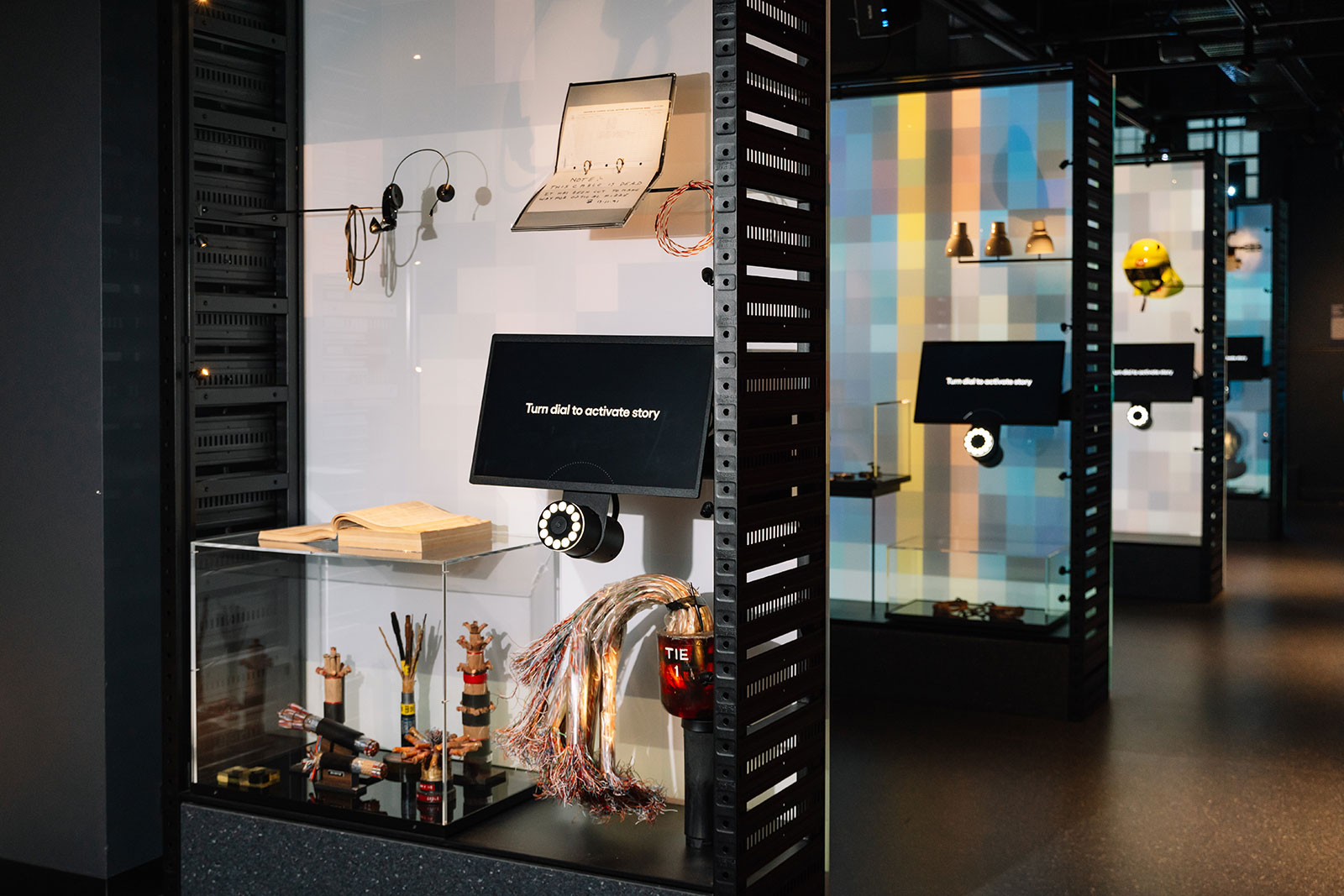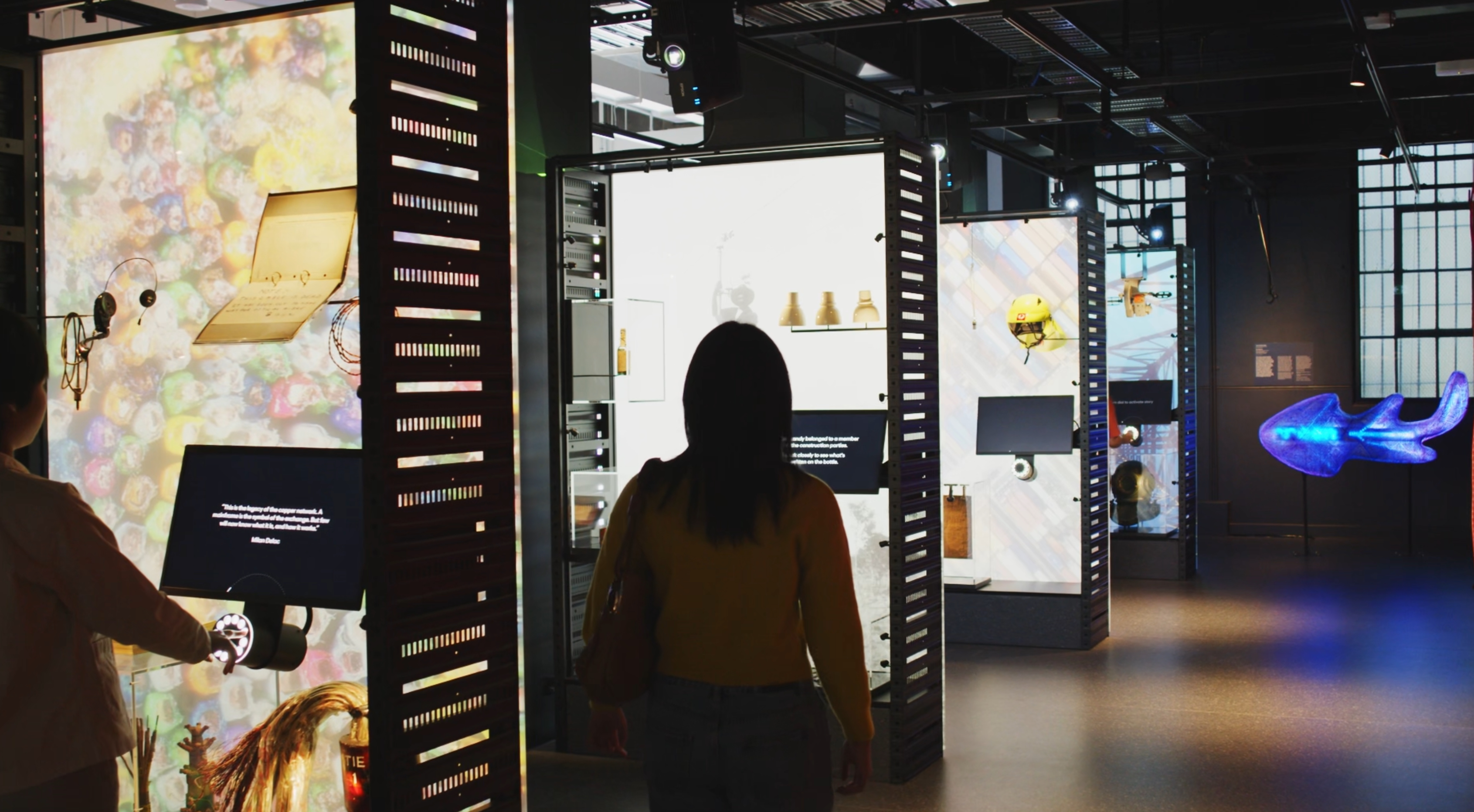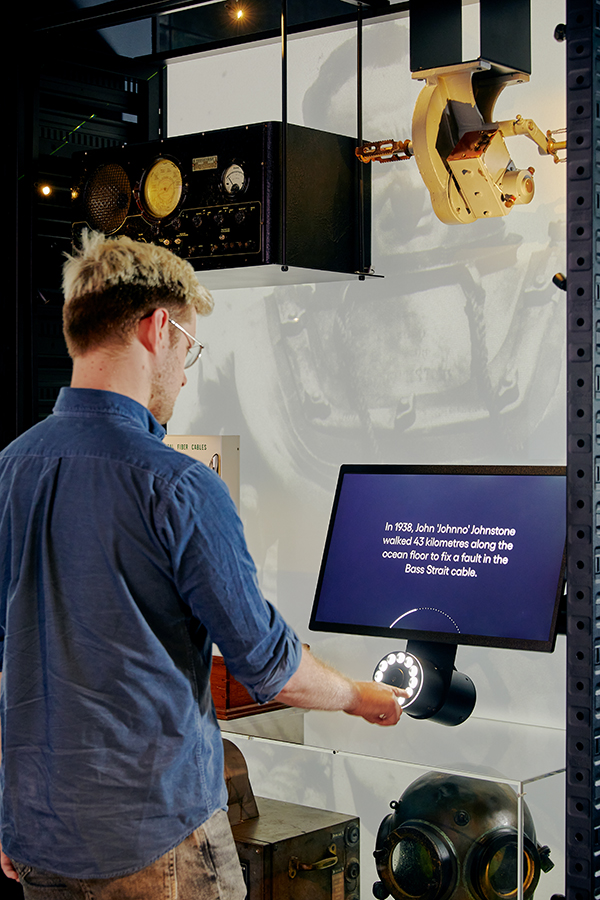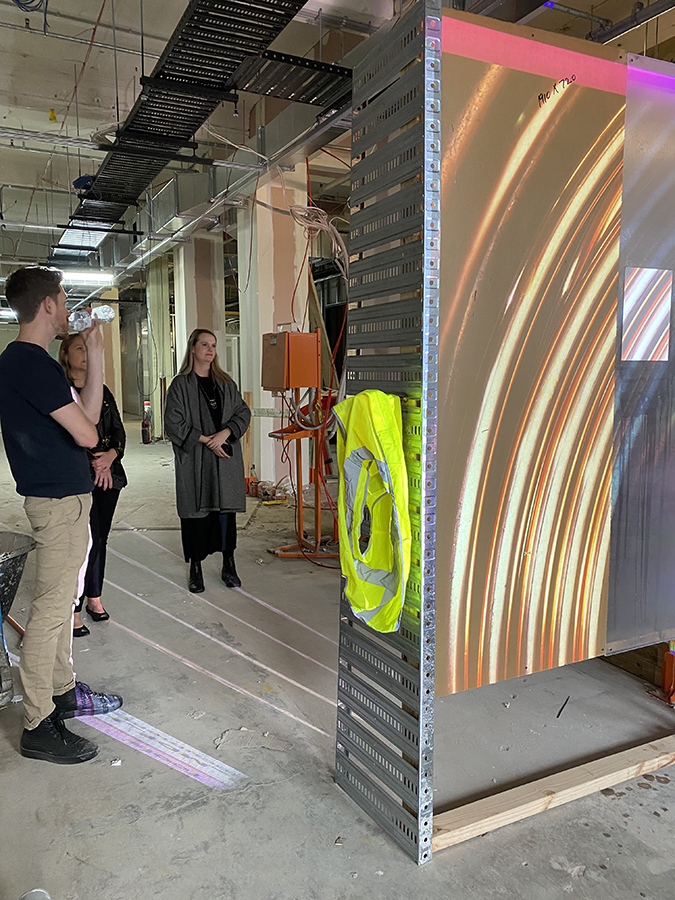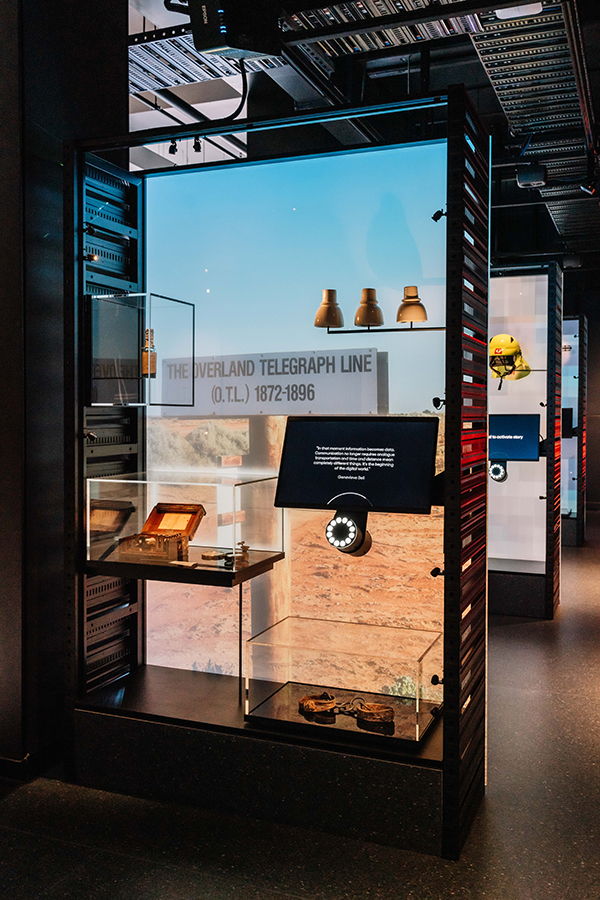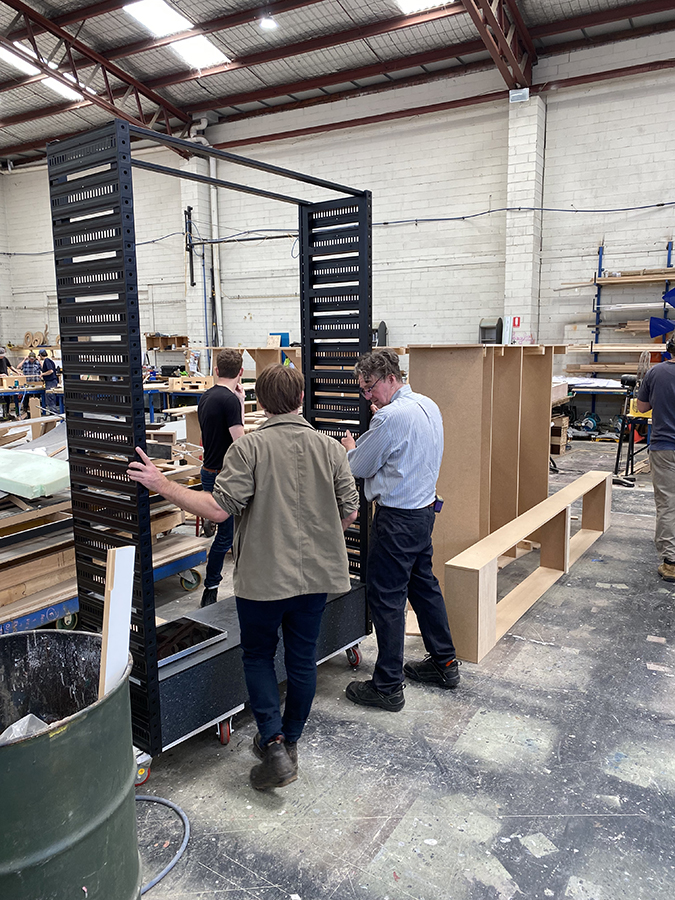User Experience: The Blades were designed to reveal the human stories within heritage objects—bringing wonder to the everyday. We asked: could The Blades feel responsive to visitor presence, making each person feel like a node in an active network, and the building feel ‘alive’? User experience was embedded from the outset, involving curatorial, collections, digital and spatial design, and fabrication teams.
Form: The design thoughtfully reinterpreted the building’s industrial heritage through a refined aesthetic, using off-the-shelf cable trays and glass to create sculptural Blades that served as deconstructed showcases. These elements blended seamlessly into the existing architecture, maintaining historical integrity while introducing a bold, contemporary design language. The double-sided projection mapping and floating display cases contributed to a cinematic, visually striking environment that felt both grounded in history and future-facing.
Function: Intuitive and accessible, the experience used familiar interaction methods—such as a modernised rotary dial—and proximity sensors that triggered content hands-free. The Blades supported immersive storytelling while meeting strict environmental controls for heritage objects. The design was both visually compelling and functionally robust, delivering on educational, operational, and preservation needs.
Safety: Accessibility was built into every layer of the design. The Blades complied with the Disability Discrimination Act (DDA) and included embedded Auslan interpretation, closed captions, and audio description—ensuring safe, inclusive access for all. Quality: The Blades combined off-the-shelf products and bespoke high-quality materials and construction techniques to ensure durability and longevity. The digital build of the blades was templated, ensuring that they can serve as a long-term exhibition display where the storytelling and objects can be updated within the existing form.
Commerciality: As the museum’s iconic centrepiece, The Blades support NCM’s commercial goals by driving ticket sales and increasing attendance. Positioned near Swinburne University, they also reinforce NCM’s role as an educational and cultural hub.

